Let's start with the "had"s - those that thought it beneath their dignity to stay with me. First and foremost in this category there was Campanula lactiflora 'Pritchard's Variety'.
I'm not sure I had the true thing, as it is described as having dark purple bells and mine were mid-purple only. No matter. Praise has been heaped on C. lactiflora by many a famous gardener, and 'Pritchard's Variety' along with the pinkish 'Loddon Anna' are just the best-known for borders.
C. lactiflora, whether 'Pritchard's' or not, did not like its allocated spot - squeezed between the rose, my cistus and pots on the remaining two sides. Neither did it want to wait for the promised land - the one I promised I'd take it to one day when I'd have a proper garden - but went in search for it itself. That is to say: it grew weaker and weaker until this year I believe it reached plant heaven, i.e. it did not come up again. I should like to try this species again when I indeed will have a proper garden, in the meantime I try to take this as a warning.
Nearby, even more in the shade perhaps, some Campanula glomerata just hang on for bare life. In light soils it creeps and runs to the point of overrunning a plot, but on our London clay (albeit improved one) it does not manage much. And, of course, the shade wears it out. My plants are gifts from my mother's garden - the ultimate light soil there, but too dry for C. glomerata to conquer it completely - and they are still with me but too weak to flower. I just leave them were they are, as the spot really is invisible.
But one day, in this longed for garden proper, I should like to try grow them again, especially some of the lovely named varieties such as the white 'Schneekrone' ('Crown of Snow') which has not just one domed clusterhead of flowers at the top but whirls above whirls, like a candelabra primula.
I was also a bit naïve with Campanula latifolia, I guess. I had come across a quote saying "its toughness in the face of competition and difficult conditions make it a most elegant plant for wild or woodland gardens. We found the white one among the nettles when we took over our 17th-century garden." Mine was the white one and bearing that quote in mind, I planted it in a dry, shady corner - thinking it would cope and simultaneously be kept in check there.
Well, that was a bit too optimistic perhaps. A new plant, pale lavender, has a slightly more favourable spot and gets watered every now and then, so it is still with me. I wish I could say it was the stately plant I admired elsewhere, e.g. at Kew, but again: too little space and light for that. But at least it does flower. With this campanula, too, there are lovely named varieties - such as the deep violet 'Brantwood' or the pale lilac coloured 'Gloaming'. The species, by the way, is a native to most of Europe, save the Mediterranean. Apparently it loves slightly acid soils and can be invasive there.
So which treasures are there? Well, there is the lovely hybrid Campanula 'Sarastro': big dark purple or deep violet tubular flowers, that look great next to white or silver-leaved Senecio cineraria. 'Sarastro' looks similar to the perhaps better known hybrid 'Kent Belle', but the latters flowers are less tubular or rather more slashed. So anxious was I not to loose this plant as well that I split the pot-full I bought and planted the bits in three different spots. So far they all do okay, but obviously they need to grow stronger before there'll be much of a show.
Double-skirted, too, but much more of a well-bred little lady is Campanula trachelium 'Bernice'. Her skirt is a deep violet-blue, very frilly and girly, and she looks amazing next to my hot pink Salvia 'Cerro Potosi'. Unfortunately, she's also a magnet to black-fly. I am yet to find out whether this is due to my keeping her in a small pot or a general vice, a sort of flaw in character.
Also back in a pot now is Campanula alliariifolia. It is a self-seeded plant which I intend to keep as a back-up, since its mother in the shady bed slowly gets swamped by a white Japanese anemone. I love its slender spire of slim white bells, like a white foxglove perhaps - just a bit more stocky. The plan will eventually bulk up though and form a clump.
I love the dark purple and the white ones best. But with seedlings, there is no way to tell the colour before the plant is well budded up. So which ones to keep? There is only room some very few plants! Invariably I end up with either pink or pale purple... It is maddening. That even happens when I buy a plant in a nursery or garden centre! Campanula medium is biannual, you can get plants in autumn or spring. But no matter how often I buy 'Alba' or 'white form', they never turn out as claimed! But, of course, they are beautiful all the same - just so shamefully fleeting: glorious for one week, two, if you consider the buds, but no good after that.
Well, obsession never made for rational choices I guess. So I have, as you are sure to agree, far too many campanulas for my tiny plot - many of which look fairly drab for most of the year. But does that stop me? Make an informed guess... Am I happy with it? You bet!
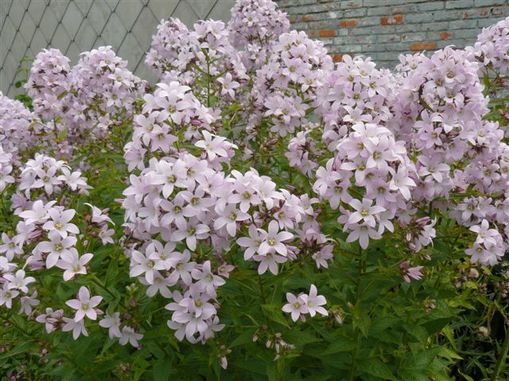
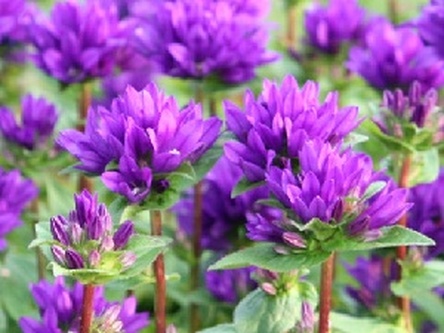

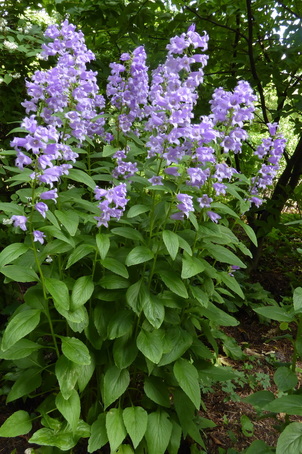
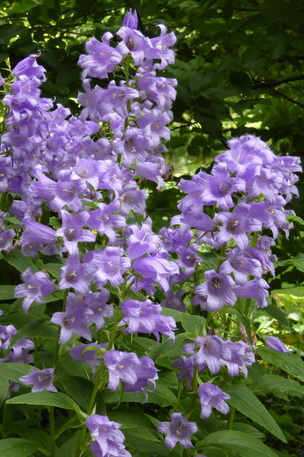
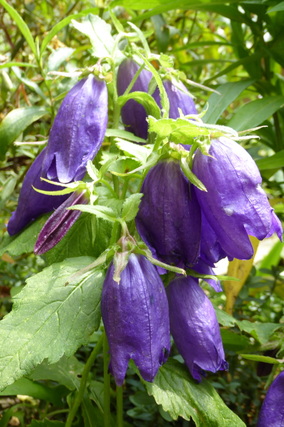

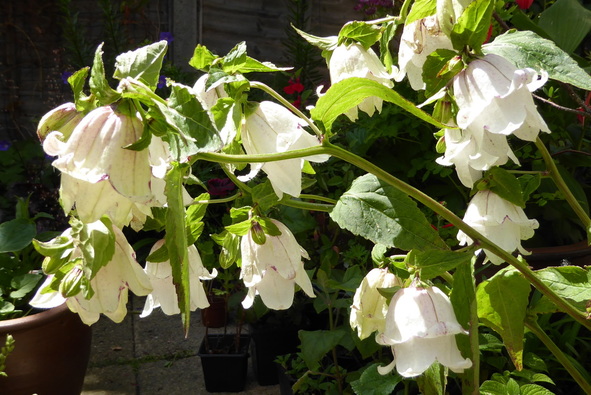

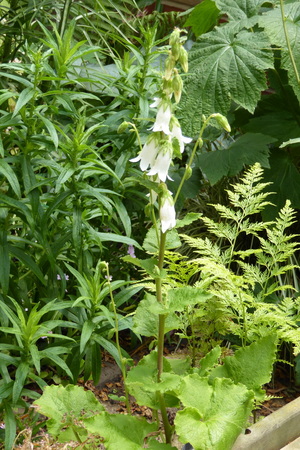
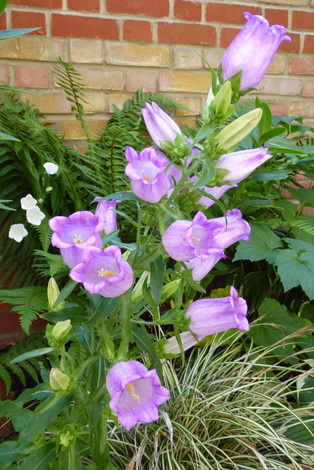
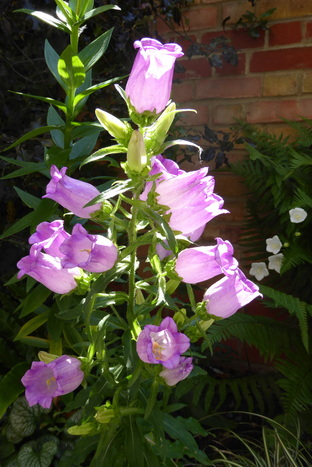
 RSS Feed
RSS Feed